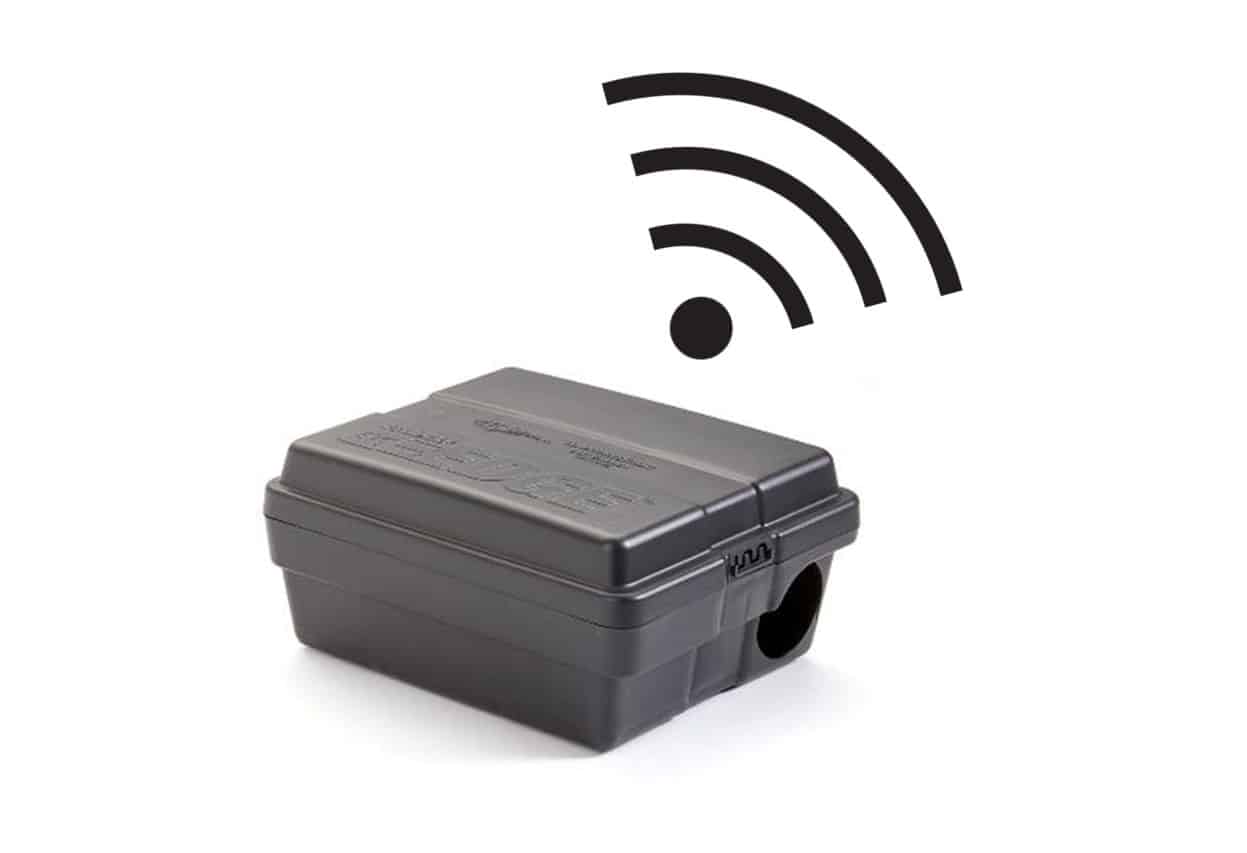Mice Pest Control sydney
Mice pest control is a crucial aspect of maintaining a healthy and safe living environment. Mice, along with other rodents, are notorious for causing extensive damage to property and posing significant health risks. This blog post will delve into the various methods and strategies for effective mice pest control in sydney, including professional pest control services, rodent bait stations, and more.
The Importance of Pest Control
Pest control is essential in both urban and rural settings. Rodents, particularly mice and rats, can be found in various environments, including homes, commercial properties, and agricultural areas. These nocturnal creatures can infiltrate your living spaces through small entry points, leading to a full-blown rodent infestation if not addressed promptly.
In Sydney metro, the presence of rodents can be particularly problematic for health issues. Rats and mice are known to contaminate food and water sources, posing severe health risks to humans and pets. They can also cause property damage by gnawing on electrical wires, which can lead to electrical fires, and damaging structural components of buildings.
Common Rodents: Norway Rat, Roof Rat, and House Mouse
Three common rodents often encountered in pest control are the Norway rat, roof rat, and house mouse. Each of these pests has unique characteristics and behaviors that make control rats require specific control strategies.
Norway Rat: Also known as the rat control the brown rat, the Norway rat is a large rodent that typically nests in burrows and is often found in urban areas. They are known for their aggressive nature and can cause significant damage to property and food supplies.
Roof Rat: The roof rat, or black rat, prefers elevated nesting sites, such as attics and roof voids. They are excellent climbers and can enter homes through rooflines and overhanging branches.
House Mouse: The house mouse is smaller than the Norway and roof rats and is commonly found inside homes and buildings. They can reproduce rapidly, leading to severe mouse infestations if not controlled early. Call 1300119085.
Health Risks and Property Damage
Rodents carry diseases that can be transmitted to humans and pets, such as hantavirus, leptospirosis, and rat bite fever. They can also trigger allergies and asthma symptoms due to the presence of rodent droppings and urine. Moreover, rodents can cause extensive damage to properties by chewing through materials like wood, plastic, and even metal.
Mice Pest Control Solutions
Effective mice pest control involves a combination of strategies tailored to the specific circumstances of the infestation. Here are some common methods used by pest and mouse control and experts:
Rodent Bait Stations and Rodent Baits: These are strategically placed to both attract rats and eliminate rodents. The bait stations protect the bait from non-target animals and keep it fresh for longer periods.
Rodent Tracking Powders: These powders are used to trace the movement of rodents and identify their entry points. They help in devising an effective treatment plan for rodent control.
Snap Traps and Glue Boards: Traditional methods like snap traps and glue boards are still widely used for their effectiveness in capturing and killing rodents.
Essential Oils and Peppermint Oil: Natural repellents like essential oils and peppermint oil can be used as a supplementary measure to deter rodents from entering certain areas.
Professional Pest Control Services: Engaging professional pest control services ensures a comprehensive approach to dealing with rodent infestations. Professional pest controllers are equipped with the knowledge and tools to address the problem effectively and prevent future infestations. Call 1300119085.

Preventive Measures
Preventing a rodent infestation involves keeping your home and surroundings clean, sealing potential entry points, and eliminating food sources that attract rodents. Regularly inspect your property for signs of rodents, such as gnaw marks, rodent droppings, and tracks. Keeping food preparation areas clean and storing food in sealed containers can also help in controlling mice and rats.
Mice pest control is a multifaceted task that requires a combination of strategies to be effective. By understanding the behaviors of common rodents like the Norway rat, roof rat, and house mouse, and employing various control methods, you can protect your home and family from the risks associated with rodent infestations. In the next sections, we will delve deeper into specific rodent control methods, various professional service services, and preventive measures to keep your property rodent-free. Call 1300119085.
Effective Rodent Control Methods
Effective rodent control requires an integrated approach, utilizing various techniques and tools to tackle the same rat problem from multiple angles. Here, we explore some of the most effective rodent treatment methods and pest control solutions available today.
Rodent Bait Stations and Rodent Baits
Rodent bait stations and baits are among the most commonly used tools in rodent pest control. These stations are designed to house rodent baits securely, preventing access by children, pets, and other non-target animals. The bait inside attracts rodents, who consume it and later succumb to its effects.
Types of Rodent Baits:
Anticoagulant Baits: These baits contain substances that prevent blood from clotting, causing internal bleeding in rodents. Common examples include bromadiolone and brodifacoum.
Non-Anticoagulant Baits: These include substances like bromethalin, which disrupts the rodents’ nervous system, leading to death.
Snap Traps and Glue Boards
Traditional methods like snap traps and glue boards are still highly effective for controlling rodent populations. Snap traps kill rodents instantly, while glue boards capture them alive, allowing for humane disposal.
Advantages of Snap Traps and Glue Boards:
Snap Traps: These are quick and effective, ensuring an immediate kill. They are reusable and can be placed in various strategic locations.
Glue Boards: These traps are useful for monitoring rodent activity. They can be placed along walls, under sinks, and in other areas where rodents are known to travel.
Rodent Tracking Powders and Essential Oils
Rodent tracking powders and essential oils can be used to complement other rodent control methods. Tracking powders help identify rodent entry points and high-traffic areas, while essential oils, such as peppermint oil, act as natural repellents.
Professional Pest Control Services
Engaging professional pest control services is often the most effective way to handle a severe rodent infestation. Pest control experts have the knowledge and tools necessary to assess the situation accurately, implement a comprehensive treatment plan, and ensure long-term prevention. Call 1300119085.
Benefits of Professional Pest Control Services:
Expert Assessment: Professional pest controllers can identify the extent of the infestation and determine the most effective control methods.
Customized Treatment Plans: They provide tailored solutions based on the specific circumstances of your property and the type of rodents involved.
Preventive Measures: Professionals can advise on and implement preventive measures to reduce the risk of future infestations.

Preventing Rodent Infestations
Preventing a rodent infestation involves a combination of cleanliness, property maintenance, and proactive measures. Here are some tips to help you keep rodents at bay:
1. Seal Potential Entry Points:
Inspect your home for any cracks or gaps in the walls, foundation, and roof. Seal these entry points to prevent rodents from entering.
2. Eliminate Food Sources:
Store food in airtight containers and dispose of garbage regularly. Avoid leaving dirty dishes and food scraps out overnight.
3. Maintain Cleanliness:
Keep your home clean and free of clutter. Regularly vacuum and sweep floors, and wipe down surfaces to remove any food particles.
4. Remove Attractants:
Trim overhanging branches and shrubs near your home. Remove any piles of wood, debris, or other materials that could provide shelter for rodents.
Rodent Infestation Signs
Detecting a rodent infestation early is crucial for effective control. Look out for these common signs of rodent activity:
Rodent Droppings: Small, dark droppings near food sources, in cupboards, or along baseboards.
Gnaw Marks: Rodents chew on wood, plastic, and other materials, leaving visible gnaw marks.
Tracks and Smudges: Look for tracks and smudge marks along walls and floors.
Nests: Rodents build nests using shredded paper, fabric, and other materials.
Noises: Scratching and scurrying sounds, particularly at night, indicate rodent activity.
Addressing Specific Rodent Problems
Different rodents require specific control strategies. For mice problem for example, Norway rats, roof rats, and house mice each have unique behaviors and nesting habits.
Norway Rats:
Typically nest in burrows and prefer ground-level locations.
Control methods include using rodent bait stations and snap traps near their burrows.
Roof Rats:
Prefer elevated areas and can be found in attics and roof voids.
Control methods include sealing entry points and placing traps along their travel routes.
House Mice:
Commonly found indoors and can reproduce rapidly.
Control methods include using rodent bait stations, snap traps, and glue boards.
Effective mice pest control and rodent control require a comprehensive approach, combining various methods and preventive measures. By understanding the behaviors of different rodent species and employing the right tools and techniques, you can protect your home and family from the risks associated with rodent and mice infestations here. In the next sections, we will delve deeper into the specifics of rodent bait stations, tracking powders, and other advanced control methods to ensure a rodent-free environment. Call 1300119085.
Advanced Rodent Control Techniques
In the battle against rodent infestations, advanced techniques and tools play a crucial role. These methods provide effective, long-term solutions to control and eliminate rodent populations. Here, we explore some of these advanced rodent control techniques in detail.
Rodent Bait Stations: An In-Depth Look
Rodent bait stations are an essential tool in the arsenal of any pest control expert. These stations are designed to house rodent bait securely, ensuring that it remains effective over time and inaccessible to non-target animals.
Advantages of Rodent Bait Stations:
Safety: The bait is contained within a secure station, preventing accidental exposure to children, pets, and other animals.
Effectiveness: Bait stations attract rodents, providing a centralized location where they can consume the bait.
Monitoring: They allow for easy monitoring of rodent activity, helping pest control experts assess the severity of the infestation.
Types of Rodent Bait Used in Bait Stations:
Anticoagulant Baits: These baits work by preventing the rodent’s blood from clotting, leading to internal bleeding and death. They require multiple feedings over several days to be effective.
Acute Baits: These act quickly and usually require only a single feeding to be lethal. Examples include bromethalin and zinc phosphide.
Rodent Tracking Powders
Rodent tracking powders are another effective tool for controlling rodent infestations. These powders adhere to the rodents’ fur as they move through treated areas, allowing pest control experts to trace their movements and identify entry points and nesting sites to control mice.
How Rodent Tracking Powders Work:
Application: Powders are applied to areas where rodent activity is suspected, such as along baseboards and entry points.
Tracking: As rodents move through the powder, it sticks to their fur and is later ingested during grooming, providing a secondary means of control.
Monitoring: The visible tracks left by the powder help identify high-traffic areas and potential entry points, allowing for targeted treatment.
Rodent Bait and Rodent Bait Stations
Rodent bait, when used in conjunction with rodent bait stations, can be highly effective in controlling rodent populations. Bait stations protect the bait from the elements and non-target animals, ensuring it remains potent and accessible to rodents.
Snap Traps and Glue Boards
Snap traps and glue boards are traditional methods that remain popular due to their effectiveness and simplicity.
Snap Traps:
Advantages: Snap traps provide an instant kill, which can be more humane than some baiting methods. They are reusable and can be placed in various locations.
Placement: For maximum effectiveness, snap traps should be placed along walls, behind appliances, and near suspected entry points.
Glue Boards:
Advantages: Glue boards are useful for monitoring rodent activity and capturing rodents alive, allowing for humane disposal.
Placement: Like snap traps, glue boards should be placed along walls and in areas where rodent activity is suspected.
Essential Oils and Natural Repellents
Natural repellents, such as essential oils, can be a supplementary measure in rodent control. Peppermint oil, for example, has been found to deter rodents due to its strong scent.
Using Essential Oils:
Application: Soak cotton balls in essential oil and place them in areas where rodents are active.
Effectiveness: While not a standalone solution, essential oils can be effective when used in conjunction with other rodent control methods.
Professional Pest Control Services: Comprehensive Solutions
For severe rodent infestations, professional pest control services are often the best option. These services provide comprehensive solutions to pest control solution that address the root cause of the infestation and implement long-term prevention measures. Call 1300119085.
Benefits of Professional Services:
Expertise: Pest control experts have extensive knowledge and experience in dealing with rodent infestations.
Customized Solutions: They offer tailored treatment plans based on the specific circumstances of the infestation.
Preventive Measures: Professionals can implement preventive measures to reduce the risk of future infestations, such as sealing entry points and advising on sanitation practices.
Preventive Measures: Keeping Rodents at Bay
Preventive measures are crucial in maintaining a rodent-free environment. By eliminating potential attractants and sealing entry points, you can significantly reduce the likelihood of a rodent infestation.
Key Preventive Measures:
Seal Entry Points: Inspect your property for cracks, gaps, and other potential entry points. Seal these with caulk, steel wool, or other appropriate materials.
Eliminate Food Sources: Store food in airtight containers, clean up spills immediately, and dispose of garbage regularly.
Maintain Cleanliness: Keep your home clean and free of clutter. Regularly vacuum, sweep, and wipe down surfaces.
Remove Attractants: Trim overhanging branches and shrubs, and remove piles of wood, debris, or other materials that could provide shelter for rodents.

Signs of a Rodent Infestation
Detecting a rodent infestation early can prevent extensive damage and health risks. Be vigilant for these common signs:
Rodent Droppings: Small, dark droppings near food sources, in cupboards, or along baseboards.
Gnaw Marks: Rodents chew on wood, plastic, and other materials, leaving visible marks.
Tracks and Smudges: Look for tracks and smudge marks along walls and floors.
Nests: Rodents build nests using shredded paper, fabric, and other materials.
Noises: Scratching and scurrying sounds, particularly at night, indicate rodent activity.
Rodent control requires a multifaceted approach, utilizing a combination of advanced techniques and preventive measures. By understanding the behaviors of different rodent species and employing the right tools and strategies, you can effectively manage and prevent rodent infestations. In the next section, we will explore specific case studies and success stories of rodent control, providing practical insights and tips for maintaining a rodent-free environment. Call 1300119085.
Case Studies and Success Stories in Rodent Control
Real-world examples of successful rodent control provide valuable insights and practical tips for managing and preventing infestations. The following several case studies that highlight effective strategies and methods used to combat rodent problems.
Case Study 1: Urban Apartment Building in Neutral Bay 2089
Background: An urban apartment complex in Sydney faced a severe rodent infestation. The residents reported frequent sightings of rats and mice, particularly in the basement and ground floor units. The infestation was causing property damage and health concerns among the tenants.
Assessment: Safe Pest control expert team conducted a thorough inspection of the property, identifying multiple entry points, food sources, and nesting sites. The rodents included Norway rats, roof rats, and house mice.
Treatment Plan: Safe pest control Sydney implemented a comprehensive treatment plan involving several steps:
Sealing Entry Points: All identified entry points were sealed using steel wool and caulk to prevent further rodent access.
Rodent Bait Stations: Bait stations containing anticoagulant rodent baits were placed in strategic locations, such as the basement, near garbage areas, and along walls.
Snap Traps and Glue Boards: These were deployed in high-traffic areas to capture rodents quickly.
Essential Oils: Cotton balls soaked in peppermint oil were placed in cupboards and storage areas as a supplementary measure.
Outcome: Within a few weeks, the rodent activity significantly decreased. Regular monitoring and maintenance ensured that the infestation did not recur. The residents reported improved living conditions, and the apartment complex remained rodent-free.
Case Study 2: Restaurant in Sydney 2000
Background: A popular restaurant in Sydney CBD experienced a mouse infestation, posing a significant risk to food safety and the establishment’s reputation. The mice infestation was primarily in the kitchen and food storage areas.
Assessment: Our professional pest controllers inspected the restaurant, finding evidence of gnaw marks, rodent droppings, and nests in hidden areas.
Treatment Plan: The treatment plan focused on immediate elimination and long-term prevention:
Rodent Bait Stations: Bait stations were installed in the kitchen, storage areas, and behind appliances.
Rodent Tracking Powders: Tracking powders were used to identify and monitor rodent pathways.
Sanitation Improvements: The restaurant’s staff was trained on proper sanitation practices to eliminate food sources and maintain cleanliness.
Regular Monitoring: Our pest control Sydney team scheduled regular visits to monitor the situation and replenish baits as needed.
Outcome: The infestation was brought under control within two weeks. The restaurant staff continued to follow the recommended sanitation practices, and the regular monitoring visits ensured that the problem did not return. Call 1300119085.
Case Study 3: Suburban Home in Castle Hill 2154
Background: A suburban family reported a rodent problem in their home, particularly in the attic and kitchen areas. The family was concerned about the health risks and property damage caused by the rodents.
Assessment: Our pest control experts conducted a thorough inspection, discovering roof rats and house mice nesting in the attic and behind kitchen cabinets.
Treatment Plan: A tailored treatment plan was developed, including:
Rodent Bait Stations and Snap Traps: These were placed in the attic, kitchen, and garage.
Sealing Entry Points: The team sealed gaps in the roofline, around windows, and in the foundation.
Essential Oils: Peppermint oil was used in storage areas to deter rodents naturally.
Regular Follow-Ups: Follow-up visits were scheduled to monitor progress and make any necessary adjustments.
Outcome: The three family members saw a noticeable reduction in rodent activity within a few days. Continued monitoring and preventive measures kept their home rodent-free.
Tips for Maintaining a Rodent-Free Environment
Based on these case studies, here are some practical tips for maintaining a rodent-free environment:
Regular Inspections: Conduct regular inspections of your property to identify and seal potential entry points.
Sanitation: Keep your living and storage areas clean. Dispose of garbage regularly and store food in airtight containers.
Professional Services: Engage professional pest control Sydney services for severe infestations or ongoing monitoring and maintenance.
Preventive Measures: Use natural repellents, such as essential oils, and implement preventive measures like trimming overhanging branches and eliminating clutter.
Rodent control requires a proactive and multifaceted approach. By learning from real-world examples and implementing a combination of advanced techniques and preventive measures, you can effectively manage and prevent rodent infestations. In the final section, we will discuss the importance of ongoing maintenance and monitoring, as well as the role of professional pest control services in ensuring a rodent-free environment. Stay tuned for more insights and practical advice on maintaining a healthy, safe, and rodent-free home or business.
On-Time Service

5 STAR SERVICE BASED ON 100+ GOOGLE REVIEWS
PET & FAMILY FRIENDLY TREATMENT

ALL YEAR-ROUND PROTECTION
Take Back Control Now
8
REASON TO CHOOSE SAFE PEST CONTROL
- Guarantee protection all year-round
- 30 Years Collective Experience
- An impeccable reputation across Sydney's Suburbs
- Certified treatments & written Warranty On all work carried out
- Family Owned & Operated
- Rated #1 Pest Control In Sydney NSW
- No Mess, No Smell
- Family & Pet Friendly Treatments

REQUEST A QUOTE
